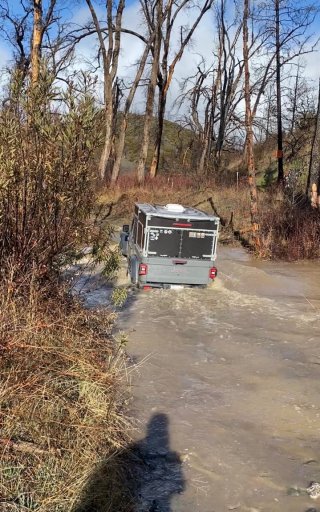
Advocate II
- 2,315
- First Name
- Randall
- Last Name
- Treloyn
- Member #
-
5615
- Ham/GMRS Callsign
- VK7VWK
Has anybody got any experience when it comes to the water-fording abilities of Jeeps?
The specific vehicle I am curious about is a JT Gladiator, but a JL Wrangler with the Pentastar engine would be similar. I would likely fit a snorkel and breathers to give some protection anyway.
This is a gasoline vehicle. The weak point of my previous gasoline vehicles was water in the ignition system. My last 3 vehicles were diesel, so the engines could, in theory, be completely submerged (especially the minimal electrics Nissan).
The specific vehicle I am curious about is a JT Gladiator, but a JL Wrangler with the Pentastar engine would be similar. I would likely fit a snorkel and breathers to give some protection anyway.
This is a gasoline vehicle. The weak point of my previous gasoline vehicles was water in the ignition system. My last 3 vehicles were diesel, so the engines could, in theory, be completely submerged (especially the minimal electrics Nissan).






